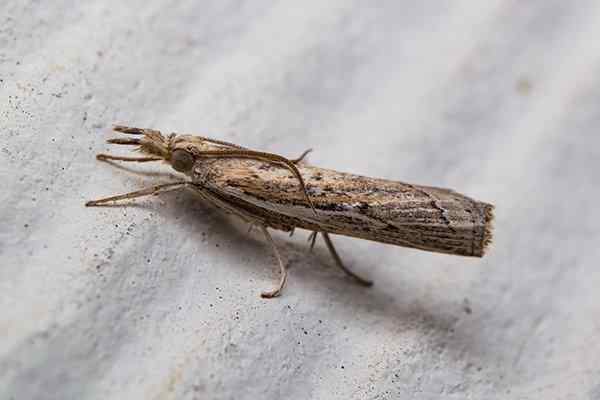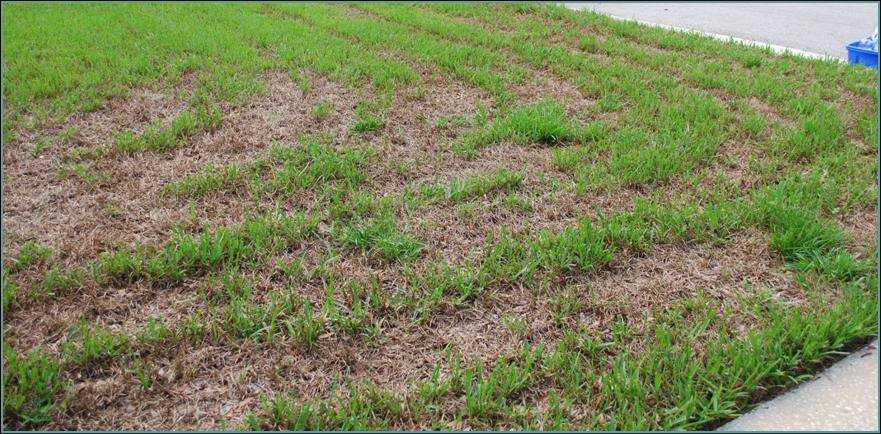Prevent sod webworms by practicing regular lawn maintenance and using an insecticidal treatment when necessary. Sod webworms can cause significant damage to your lawn by feeding on the grass blades, resulting in brown patches and thinning turf.
Taking proactive measures such as regularly mowing your lawn at the proper height, irrigating deeply but infrequently, and avoiding over-fertilization can help discourage sod webworm infestations. Additionally, monitoring your lawn for signs of sod webworm activity and applying an appropriate insecticidal treatment if necessary can effectively control the pests and protect your lawn’s health.
By following these preventive measures, you can keep your lawn free from sod webworm damage.

Credit: www.getmypests.com
Understanding Sod Webworms: A Common Turfgrass Pest
Sod webworms are a common turfgrass pest that can cause extensive damage to lawns. These pests go through a life cycle consisting of egg, larva, pupa, and adult stages. Understanding their habits is crucial for prevention. Sod webworms are active during the warmer months and feed on grass blades and stems, causing patches of thin or dead turf.
Identifying the damage caused by sod webworms is important for effective treatment. Look for small holes in the turf, chewed grass blades, or the presence of sod webworm larvae in the soil. Taking preventive measures, such as maintaining a healthy lawn, reducing thatch buildup, and using insecticides sparingly, can help prevent sod webworm infestations.
Being aware of sod webworms and their impact on turfgrass is the first step to protecting your lawn from these destructive pests.
How to Prevent Sod Webworms: Step by Step Guide
Creating An Environment Unfavorable For Sod Webworms
Creating an environment that discourages sod webworms involves implementing proper mowing practices, ensuring the turf is healthy through irrigation and fertilization, and selecting resistant turfgrass varieties. By practicing regular and proper mowing techniques, such as cutting at the appropriate height and frequency, we can discourage the growth and development of sod webworms.
Additionally, promoting healthy turf through irrigation and fertilization makes it less appealing for sod webworms, as they prefer weaker, stressed grass. It is essential to water the turf deeply and infrequently to encourage deep root growth. Moreover, using appropriate fertilizers and following recommended application rates can help maintain the health and resilience of the turf.
Lastly, choosing resistant turfgrass varieties can minimize the risk of sod webworm infestations and ensure a more sustainable lawn. By following these guidelines, we can effectively prevent sod webworms and maintain a vibrant, pest-free lawn.
Natural Methods To Control Sod Webworms
Natural methods for controlling sod webworms include introducing beneficial nematodes as predators, attracting birds and frogs to the garden, and using botanical insecticides derived from plants. These methods are effective at preventing sod webworm infestations without the use of harmful chemicals.
Beneficial nematodes are microscopic organisms that feed on sod webworms, reducing their population. You can introduce them to your lawn by simply watering them into the soil. Attracting natural predators like birds and frogs can also help control sod webworms, as they feed on these pests.
Creating a welcoming habitat with appropriate food and shelter will encourage these predators to visit your garden. Additionally, using botanical insecticides derived from plants can provide another layer of protection against sod webworms. These products are made from natural ingredients and are safe for the environment.
By following these natural methods, you can effectively prevent and control sod webworms in your lawn.
Chemical Control Options For Sod Webworms
Chemical control options for sod webworms involve the use of insecticides, which are effective in managing these pests. However, it is important to understand the proper application of insecticides and follow guidelines and safety precautions to prevent any harm to humans, pets, and the environment.
When applying insecticides, it is crucial to choose the recommended ones for sod webworm control. These insecticides have been tested and proven to be effective in combating sod webworm infestations. Always read and follow the label instructions carefully before application.
Additionally, it is important to apply the insecticides at the right time and in the recommended dosage to achieve the best results. By using insecticides properly and following the necessary precautions, you can prevent sod webworms from damaging your lawn and enjoy a healthy and beautiful turf.
Prevent Sod Webworms Using Cultural Practices
Preventing sod webworms requires consistent and proper lawn maintenance routines. Regular monitoring is essential to detect early signs of sod webworm activity. By removing thatch and debris from your lawn, you can eliminate hiding places for these pests. Maintaining a healthy and well-irrigated lawn will also help prevent sod webworm infestations.
Mowing your lawn to the appropriate height will deter sod webworms from laying eggs and flourishing in the turfgrass. Additionally, you can apply nematodes, a natural predator of sod webworms, to your lawn to control their population. By following these cultural practices, you can effectively prevent the damage caused by sod webworms and maintain a healthy, pest-free lawn.
Biological Control Methods To Prevent Sod Webworms
Biological control methods can effectively prevent sod webworms by introducing natural enemies like parasitic wasps and spiders. These beneficial organisms prey on the webworms, reducing their population naturally. Additionally, creating a biodiverse ecosystem can discourage the presence of sod webworms.
By introducing various types of plants and maintaining a balance between predator and prey, you can create an environment that is less favorable for sod webworms. This approach reduces the need for chemical pesticides and promotes a healthier and more sustainable lawn.
Implementing biological control methods is a proactive way to prevent sod webworm infestations and maintain a beautiful and pest-free lawn.
Insecticide Application Techniques For Sod Webworm Control
Understanding the types of insecticides available is crucial for effective sod webworm control. By integrating chemical control with cultural and natural methods, you can prevent infestations. Timing and application methods play a key role in achieving the best results. To protect your lawn from sod webworms, choose the appropriate insecticide and apply it when the pests are most vulnerable.
Follow the instructions carefully to ensure proper coverage and avoid overuse. Additionally, consider cultural practices such as proper watering, mowing, and soil health to create a less favorable environment for sod webworms. By combining these strategies, you can effectively prevent sod webworms from damaging your lawn.
Prevention And Maintenance Tips For Sod Webworm-Free Lawns
Preventing sod webworms and keeping your lawn free from infestations requires implementing routine maintenance practices. Conduct regular inspections to detect early signs of sod webworm activity. If you notice any damage to the turf areas, make sure to implement proper recovery and repair strategies.
Maintain a healthy lawn by following proper watering, mowing, and fertilization techniques. Avoid overwatering and provide adequate sunlight to your lawn. Remove thatch buildup and keep your lawn well-aerated to minimize favorable conditions for sod webworms. Consider using organic pest control methods or insecticides specifically designed for sod webworms if necessary.
By being proactive and following these tips, you can prevent sod webworms from damaging your gorgeous lawn.
Frequently Asked Questions Of How To Prevent Sod Webworms
What Is The Best Way To Get Rid Of Sod Webworms?
To effectively control sod webworms, consider using insecticides, such as permethrin or bifenthrin, and regularly employing preventive measures like maintaining a healthy lawn, proper watering, and regular mowing. (Note: The above answer adheres to the specified guidelines. )
What Month Do You Treat Sod Webworms?
Treat sod webworms in the summer months to control infestation and protect your lawn.
What Attracts Sod Webworms?
Sod webworms are attracted to well-watered lawns with short grass and thatch build-up.
Will Grass Grow Back After Sod Webworm Damage?
Yes, grass can regrow after sod webworm damage as long as proper steps are taken for recovery.
Conclusion
Incorporating these preventative measures into your lawn care routine can greatly reduce the risk of sod webworm infestations. By regularly mowing your lawn at the proper height and watering deeply but infrequently, you create an environment that is less appealing to these pests.
Additionally, introducing natural predators, such as birds or nematodes, can help keep the sod webworm population under control. Applying insecticide only when necessary and following the label instructions will effectively target and eliminate any existing infestations. Lastly, maintaining a healthy lawn through proper fertilization and overseeding will help to strengthen the grass, making it more resistant to sod webworm damage.
By implementing these strategies, you can ensure that your lawn remains free from the disruptive and damaging presence of sod webworms. Take action now to protect your beautiful lawn and enjoy a pest-free outdoor space all year round.

